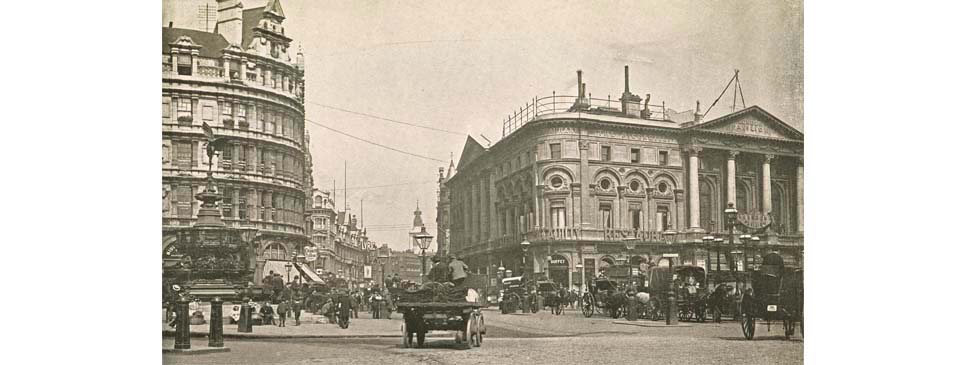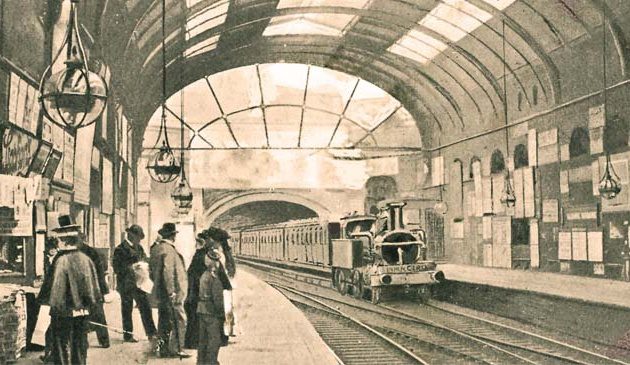In brief – Late-Victorian London

Piccadilly Circus at the end of the 19th century. We see along Shaftesbury Avenue, which was laid out in 1886 from here to Cambridge Circus and on to New Oxford Street. At the same time, the former London Pavilion music hall, seen on the right, was rebuilt and enlarged as a grand variety theatre. On the left is the Shaftesbury Memorial Fountain, erected in 1892-3 and topped by Anteros, but normally mistakenly known as ‘Eros’. Both the fountain and street are named after the philanthropist, the 7th Earl of Shaftesbury.
Several new show halls and entertainment grounds opened in the second half of the century. The Smithfield Club created the Agricultural Hall at Islington – now the Business Design Centre – in 1862 for livestock and sports events. The National Agricultural Hall, between Kensington and Hammersmith, followed along similar lines in 1884. Within two years it had changed its name to Olympia and soon became famous for its circuses and other spectaculars with up to one thousand performers. Earls Court opened in 1887 as an entertainment park near to Olympia, with a western show including demonstrations by Buffalo Bill and Annie Oakley. What was then the largest Ferris wheel in the world, which could carry up to 1,600 people, was opened at Earls Court in 1894.
Numerous public parks opened in the century, in which Londoners were able to take a stroll and breathe some fresh air. They included Victoria, Battersea and Finsbury Parks. Several former country estates were either endowed to or acquired for the public, including Clissold Park at Stoke Newington and Dulwich Park. The Alexandra Park Company purchased hillside land at Hornsey with a plan to build a leisure complex to rival that of Crystal Palace at Sydenham. Alexander Palace was completed and opened in 1872 and was an immediate success but burned down after just sixteen days. It was rebuilt and reopened in 1875.
As the British Museum collection increased, more space was required and it was decided to establish a new museum for its collection of natural artifacts: the Natural History Museum opened at South Kensington in 1881. In 1891 the sugar refiner Sir Henry Tate announced a donation of £80,000 towards the construction of a new national gallery of modern art. It eventually opened at Millbank in 1897, initially housing a collection of sixty-seven Victorian paintings. The National Portrait Gallery, which had been located in South Kensington, moved to its present home close to Trafalgar Square in 1896.
The rules of football were formalized in the 1860s, with the first such game taking place in Battersea Park in 1863. The first Football Association Cup was played during the 1871-1872 season between eight teams, with the final held at the Oval. By 1883-1884 the number of London teams taking part had risen to twenty-one and some of the modern-day clubs such as Arsenal had been created in the latter part of the century. By the 1890s crowds of spectators of up to fifty thousand attended matches, leading to the requirement for football stadiums. The All England Croquet Club was formed at Wimbledon in 1868 and from 1877 tennis was also being played. The Middlesex Cricket Club was established in 1868, moving to Lord’s several years later.


